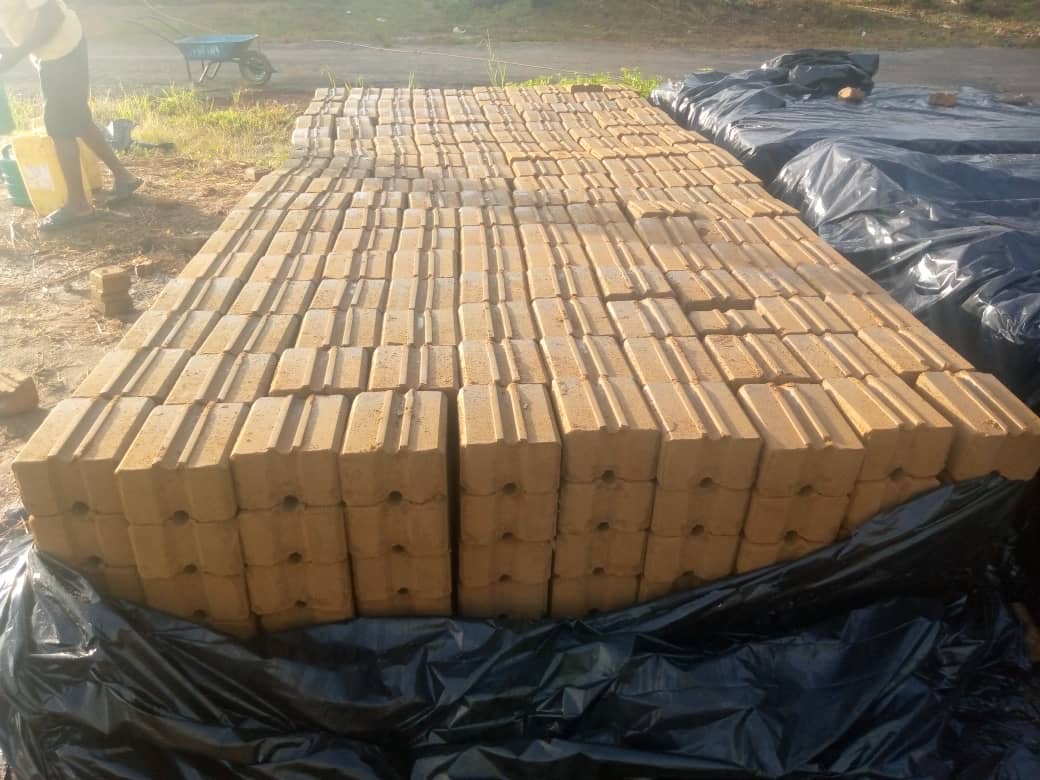
Back to the basics. It’s block production time again at TpESTATE. These are the blocks we use to build the homes at The Eco-Living Oasis at Kent, Sierra Leone
Our homes are built using the Hydraform Building Technology based on the Hydraform Interlocking Stabilized Soil Blocks. The Technology replaces regular masonry units and mortar with Dry-stacked Interlocking Hydraform Blocks. It differs from conventional masonry and is considered an alternative and sustainable building solution.
A Hydraform block is a dry-stacked (Hydraulically compressed) soil-cement, interlocking block, or Interlocking Stabilized Soil Block (ISSB) produced using Hydraform’s patented machine. The required “stabiliser” is cement; this is mixed with subsoil and about 5 – 10% water to make a slightly moist mix.
The mixture is moulded under high pressure to produce the blocks. Hydraform blocks are composed of sandy Loam soil (soil with the proper, healthy balance of sand, silt and clay) mixed with 8-10% cement. The “Green” (fresh) Hydraform blocks are stacked and covered with black plastic to avoid moisture loss. The blocks are watered daily to create a greenhouse effect, allowing the cement to harden and the blocks to gain maximum strength.
At TpESTATE, we cure Hydraform blocks for at least 14 days under plastic and allow the blocks to dry for another seven days before building. Hydraform has been used in more than 50 countries and six continents worldwide. The benefits of using this system are;
(1) Significant reduction in environmental impact due to reduction in the use of cement and rebars
(2) Natural thermal insulation resulting into reduced energy consumption
(3) Natural acoustic insulation resulting into reduce noise indoors
(4) Natural and Sustainable building materials
(5) Versatile Interlocking blocks for walls, lintels and columns
(6) Load Bearing and framed structures using blocks with high compressive strengths
(7) 15% to 40% savings in total cost of ownership
#tpestate #sustainablebuilding #hydraformsierraleone #tpgroupsl




